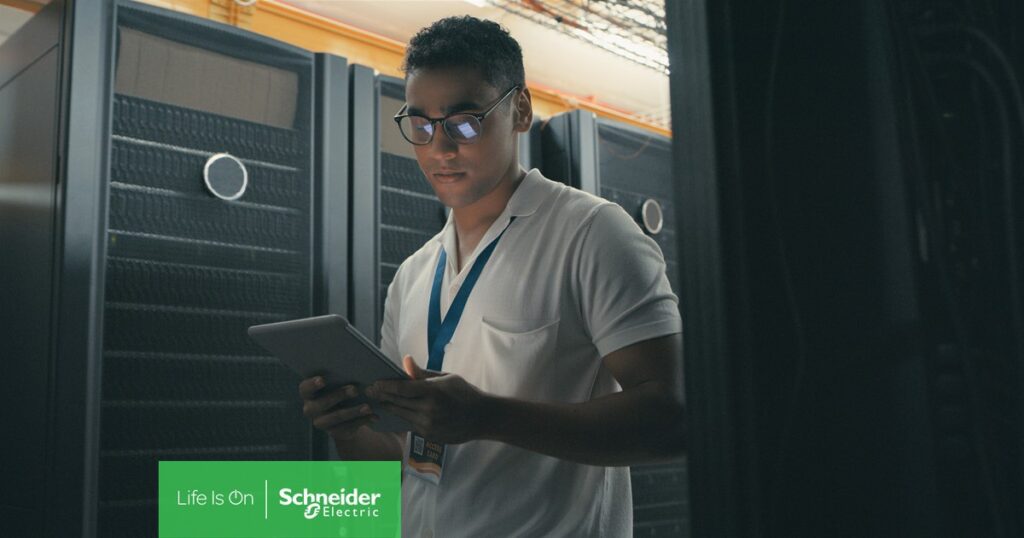In the past few years, the education sector has been caught up in the whirlwind of a digital transformation—this includes colleges and universities. At the center of it all is the acceleration of technology’s role in the classroom and beyond, putting IT teams in the driver’s seat for managing it.
The problem for many teams, however, is that they’re dealing with aging infrastructure and outdated systems. There’s a growing pressure on higher education institutions to evolve and innovate with edge computing solutions, especially if they want to keep up with other sectors like business, to deliver a more modern experience to their stakeholders.
The time to modernize is now, but don’t let the urgency scare you. In this blog we’ll cover the trends driving the need to update systems, the benefits of modernizing your IT infrastructure and the steps you can take, no matter your available budget or resources.
If you’d like to learn more after reading this blog, check out our eBook, The Case for Modernizing IT Infrastructure in Higher Education.

Here’s what’s driving the need for higher education to modernize
Colleges and universities are unique in that many have IT assets spread across a large geography. They also serve the varying needs of diverse stakeholders. Put simply, there’s a lot that tests the strength of IT backbones, including these trends:
Large scale online learning
Like many others, the education sector has grown accustomed to hybrid learning environments. By 2025, the online education market is expected to reach $350 billion. It’s a transition that millions now expect and one that many students actually prefer, which will require IT systems to be highly available and resilient.
Transformative learning tools
To meet expectations, higher education leaders are looking to technology to enhance engagement and improve the quality of learning. This can look like a ‘tribrid’ model that blends in-person, online and simulated teaching. Support of a more immersive learning experience like this will test the agility, flexibility and scalability of infrastructure.
Non-negotiable reliability
With more demand on bandwidth than ever, IT teams have to ensure uptime—no exceptions. The goal is always 99.999% reliability. To maintain that, the infrastructure must grow in proportion to the need.
The supercomputer race
Colleges that are hosts of powerful supercomputers capable of processing highly complex data tend to be more attractive to students and faculty. For those in the race to be among the elite, their data centers must be at supercomputing capacity.
Growing IoT
Beyond supercomputing, colleges are also racing to achieve ‘smart university’ status, creating greater connectivity across campus through the IoT. But this can only be successful for the colleges that have the bandwidth to accommodate it.

Occupancy variation
On campus, students and faculty are constantly coming and going. Varying occupancy can be difficult to predict. However, it can be a little easier to prepare for other events like game days.
Here’s why you should modernize your IT infrastructure
Now that we’ve covered the trends driving change, let’s talk about the benefits. Here is why modernizing matters and how it can help you build a case for bigger budgets:
Attract top talent
Here we are, in the middle of the Fourth Industrial Revolution, and it’s here that IT teams have the opportunity to leverage technology to their competitive advantage and boost recruiting with a higher caliber of experience.
Bolster security
It’s very likely that modernizing your infrastructure will naturally enhance your security. We like to say, there’s no digital security without physical security. For teams utilizing edge computing in particular, there’s an opportunity to protect your site remotely with monitoring tools that help you have a full view of what’s going on everywhere.
Improve efficiency
Modernizing your equipment often means standardizing it. This can help streamline management of your systems across campus and also makes things much easier when dealing with IT team turnover. Rather than relying on institutional knowledge of legacy equipment and having to hit the restart button year after year, you can maintain a more holistic, simplified view of your system.
Drive sustainability
Naturally, many IT components become less efficient with age. Updating to edge computing solutions that run more effectively and efficiently can equate to reducing energy consumption and contributing to overall on-campus sustainability goals.

Steps for modernizing your college’s IT infrastructure
If you’re like most IT pros, you’re dealing with aging, legacy infrastructure, lack of space and a shrinking team in a moment that demands the opposite. The goal is to respond to future capacity changes with agility, reliability, scalability and efficiency. Let’s cover the steps you can take to modernize, even on a tight budget.
First, take inventory
Evaluate your existing infrastructure and determine whether or not you need to deploy more capacity. Take stock of your servers, networking gear, UPSs, cooling units, racks and power distribution units. You may find it’s time to standardize.
Deploy updates incrementally
If your team is dealing with minimum investment opportunities, you can still do things like deploy power and cooling modules incrementally. Adding just one or more high density pods offers a modern, modular approach to updating and can extend the life of a facility.
Expand edge computing capacity
Spaces all over campus are housing micro data centers to support edge computing. By 2025, Gartner predicts 75% of enterprise-generated data will be created and processed at the edge where you can standardize your equipment, support overloaded networks, isolate disruptions, maximize efficiency and save money.
Monitor, manage, maintain
If not in place already, you should be utilizing or updating your data center infrastructure management (DCIM). It’s an important tool that combines IoT-enabled products like UPSs and cooling units with software that monitors product performance, enabling you to manage all of your sites remotely and more efficiently. It’s also another way to boost your sustainability efforts, by allowing you to keep track of the health of your equipment.
Schneider Electric offers both physical and logical monitoring
A physical layer of smart, scalable monitoring solutions like NetBotz offers intelligent pods, cameras, rack access controls, and sensors, which enable you to swiftly detect environmental threats like humidity, flooding and fire. Paired with the physical layer, a logical layer of monitoring EcoStruxure IT Expert enables around-the-clock remote monitoring of sites and equipment for full visibility into performance, efficiency and security, so you can prioritize failure prevention and resolve issues quickly.
Build a new data center (if budget allows)
If your campus’s space and power is completely depleted, it can sometimes be more efficient and beneficial for the long-term infrastructure to build an entirely new data center. And while a modernized data center can operate more efficiently and cost-effectively over the years, quite a bit of CapEx goes into its initial development.
Evolve with an innovative partner
As you make your way through this digital transformation and plan for what’s to come, you’ll want to have an innovative partner at your side who understands your budget and capabilities and can help you deploy efficient solutions that fit your needs.
Schneider Electric has resources like TradeOff ToolsTM to help IT teams evaluate opportunities and assess the best path forward. And when you’re ready to learn more about efficient, sustainable, scalable solutions, contact a team of experts ready to help.



